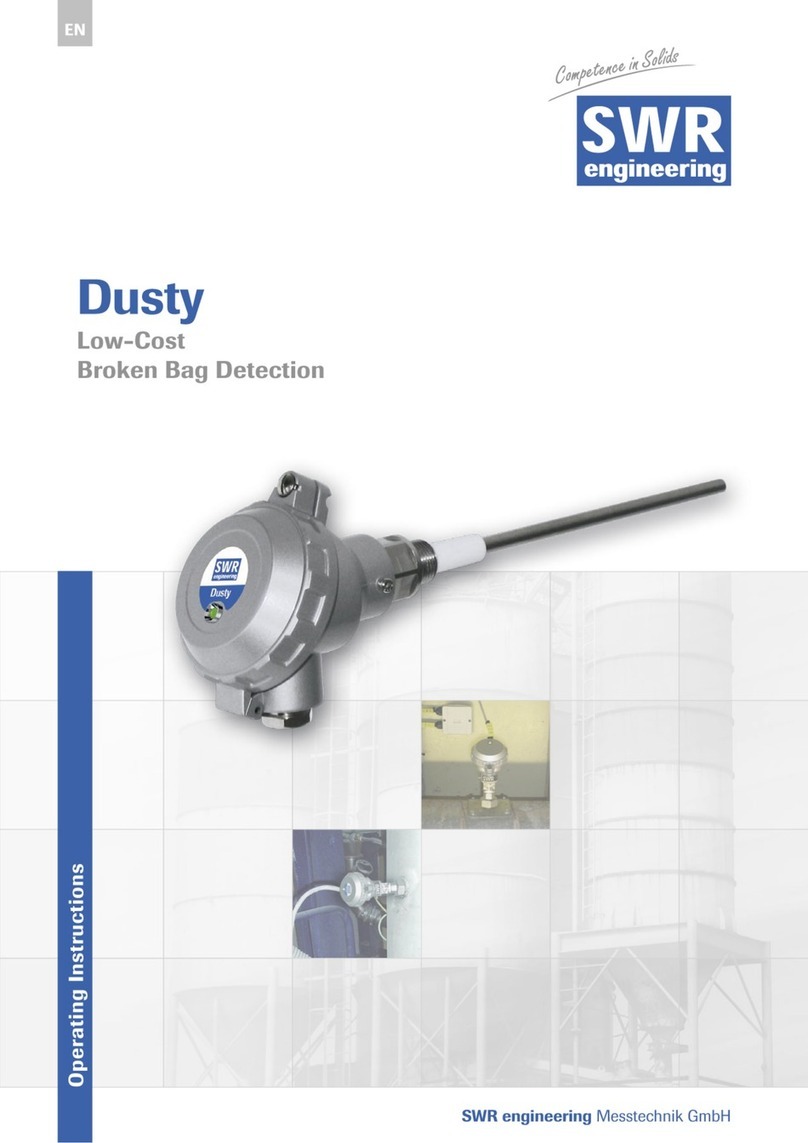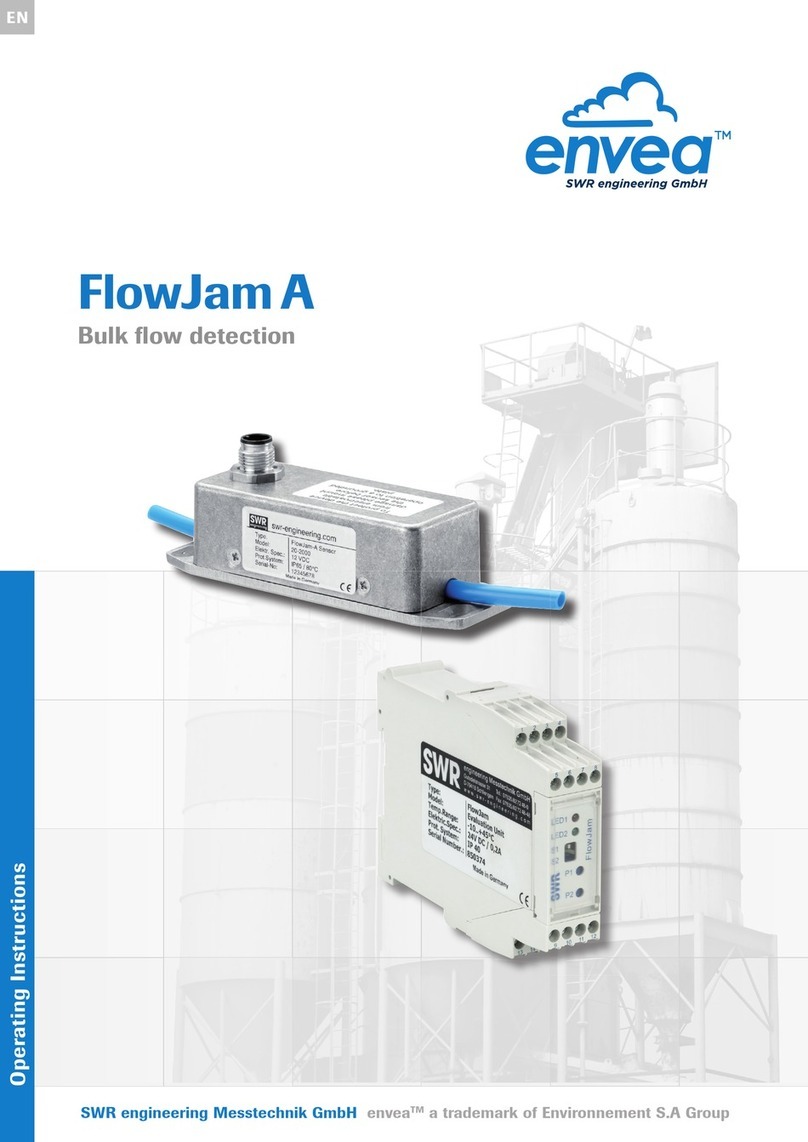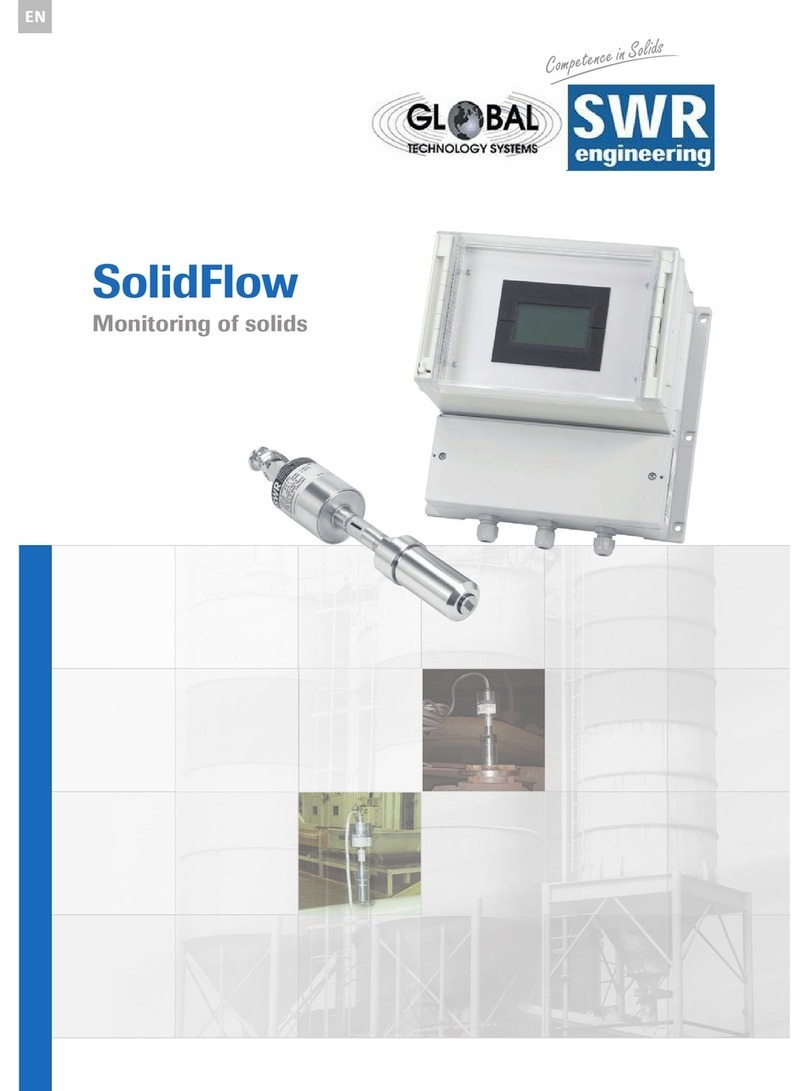
Safety
3. Safety
The measuring system SolidFlow was designed, built and tested to be safe and was shipped in safe
condition. Nevertheless persons or objects may be endangered by components of the system if these
are operated in an inexpert manner. Therefore the operational instructions must be read completely and
the safety notes must be followed.
In case of inexpert or irregular use, the manufacturer will refuse any liability or guarantee.
3.1 Regular use
The measuring system must be installed for measuring the flow rate in metallic ducts only. Other usages and
modifications of the measuring system are not permitted.
Only original spare parts and accessories of SWR engineering must be used.
3.2 Identification of dangers
Possible dangers when using the measuring system are marked by the following symbols in the
operating instructions:
Warning!
This symbol in the operating instructions marks actions, which may represent a danger for life and limb
of persons when carried out in an inexpert manner.
Attention!
All actions which may endanger objects are marked with this symbol in the operating instructions.
3.3 Operational safety
The measuring system must be installed by trained and authorised personnel only.
Switch off the supply voltage for all maintenance, cleaning or inspection works on the tubes or on
components of the SolidFlow. Follow the notes of the chapter maintenance.
The components and electrical connections must be checked for damages regularly. If damage is found,
it is to be repaired before further operation of the instruments.
3.4 Technical progress
The manufacturer reserves the right to adapt technical data to the technical progress without particular
advance notice. If you have any questions, SWR engineering will be pleased to inform you on possible
changes and extensions of the operating instructions.































